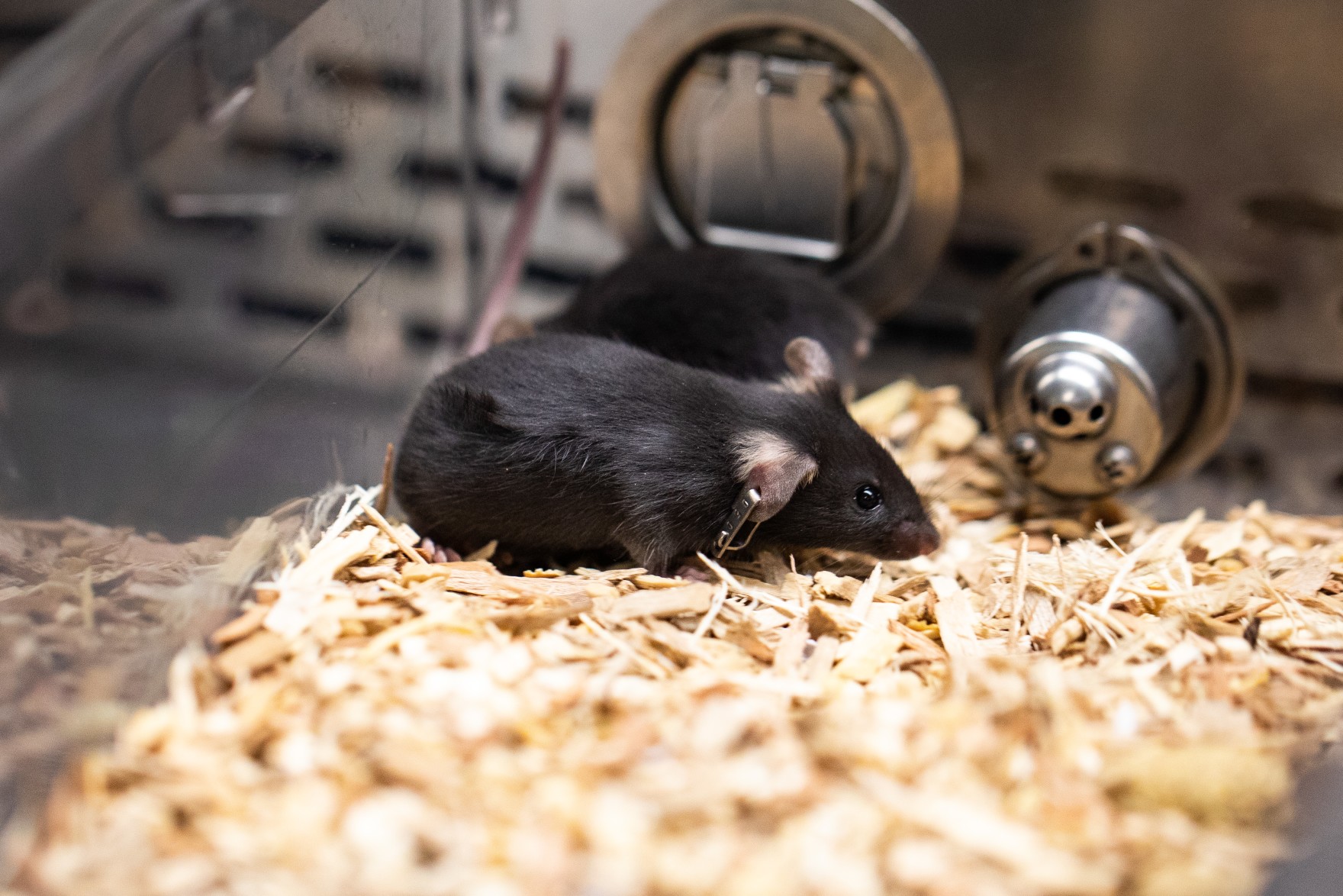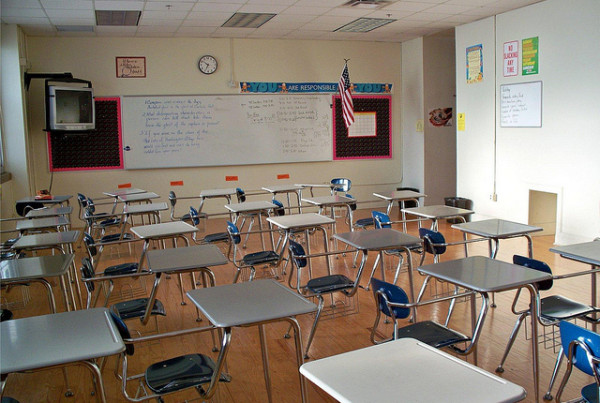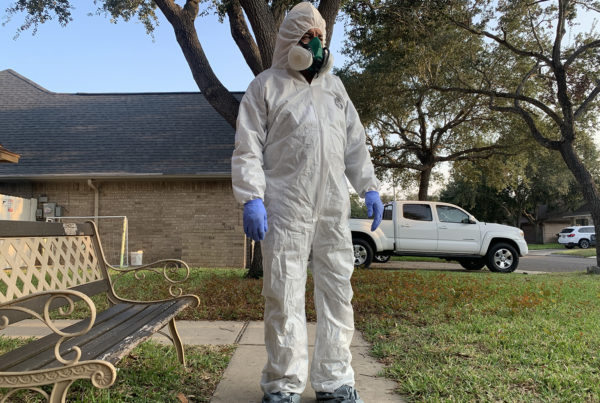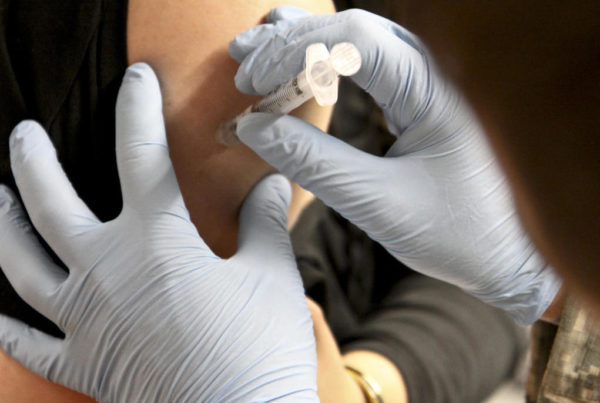From KUT:
Even with promising developments on the vaccine front, scientists around the globe are still racing to find other potential vaccines and treatments for COVID-19. And there’s a growing group of unwitting and unsung heroes in this pursuit: the lab mice.
Many people are drawn to the quiet hero. In this story, we have inaudible ones.
“No sounds; they just crawl,” Niharika Reddy Badi, a cancer research associate at UT’s Dell Medical School, said. “The only thing you can hear is them creepily crawling on their bed and little things that they have in their cage.”
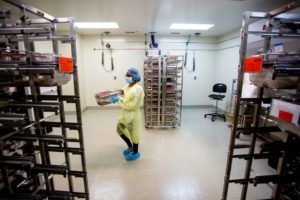
Research associate Nikki Reedy Badi tends to the mice in the lab.
Badi said she’s mostly worked with mice in cancer research and that while they are quiet, they don’t exactly keep their mouths shut.
She is currently working with a mouse colony for COVID-19 vaccine research with UT biologist and cancer researcher John Powers. Until the spring, Powers’ lab and everyone in it were looking for potential cures for melanoma and pancreatic cancer. But, like much of the world, the lab’s focus changed.
For COVID research, they needed a very specific COVID mouse.
“This mouse was actually designed about 10 years ago when SARS1 hit because SARS1 also targets the human ACE2 receptor,” Powers said, referring to a protein that appears on many human cells. “They engineered these mice to express that receptor, so they express human ACE2 in a lot of the same places we do – in the lungs, in the epithelial tissues. And they’ve brought the mouse back because of SARS-CoV-2,” the virus responsible for the pandemic.
Epithelial tissues are widespread throughout the body, in skin, the lungs and glands.
And this mouse model – as it’s referred to in the scientific community – is critical to the research. Its response to the coronavirus is similar to a human response, thanks to its engineered trait.
SARS-CoV-2 attaches itself to the ACE2 protein. Humans have these proteins throughout the body, giving the virus many options to thrive, Powers said, “which to some degree can explain some of the strange [characteristics] that COVID has.”
(Full disclosure here: I have known John Powers since high school. We even took the same science classes. He paid better attention.)
The mice have become instrumental not just in Powers’ lab, but around the world in the race to find a vaccine or treatment for COVID-19.
“They’re small,” he said. “They breed quickly. They’re relatively inexpensive. And they’re not a perfect match for us, but they’re better than, you know, say a salamander.”
And more than likely, they all come from the same place, the Jackson Laboratory in Bar Harbor, Maine. Jackson Lab supplies more than 11,000 mouse models that express certain genes of interest.
Cat Lutz, senior director of the lab’s mouse repository, said it normally takes years to build demand for research with any type of mouse. But thanks to the SARS mouse, and a bunch of cryogenically frozen sperm and eggs, they could speed up the process.
“Instead of just importing a few mice [embryos] and breeding them in that Noah’s Ark two-by-two method, we did these massive in vitro fertilizations,” Lutz said, “in order to go from, you know, just a few vials of sperm to colony sizes that were in the thousands.”
“They bite you like crazy,” she said. “I had times where I had like Band-Aids on all my fingers.”
And these mice – these unwitting heroes of COVID-19 research – help scientists understand what happens to patients suffering from the worst aspects of the disease.
“They get acute respiratory syndrome, just like the patients do,” she said. “And they also can have cytokine release storm, which is what we see in some of the most ill of patients.” This condition can cause fever, inflammation and, in the worst cases, death.
And like the most ill patients, some of the mice will not make it. But, all the mice provide useful data for labs from Paris to Austin.
In recent weeks, a handful of companies have announced positive outcomes with COVID-19 vaccine trials. And while Powers’ lab has not produced one yet, the work continues.
“There is a chance that we’ll have a vaccine soon and that would be outstanding,” he said. “But the way we’re kind of envisioning our contribution is kind of a second line. If for whatever reasons those vaccines aren’t great, or they don’t work … then maybe groups like us are kind of bringing up a second round of shots on goal.”
When a viable vaccine is available later this month … in 2021… or whenever… spare a thought for the thousands of mice who helped researchers better understand COVID-19.
Got a tip? Email Jimmy Maas at jmaas@kut.org. Follow him on Twitter @maasdinero.


